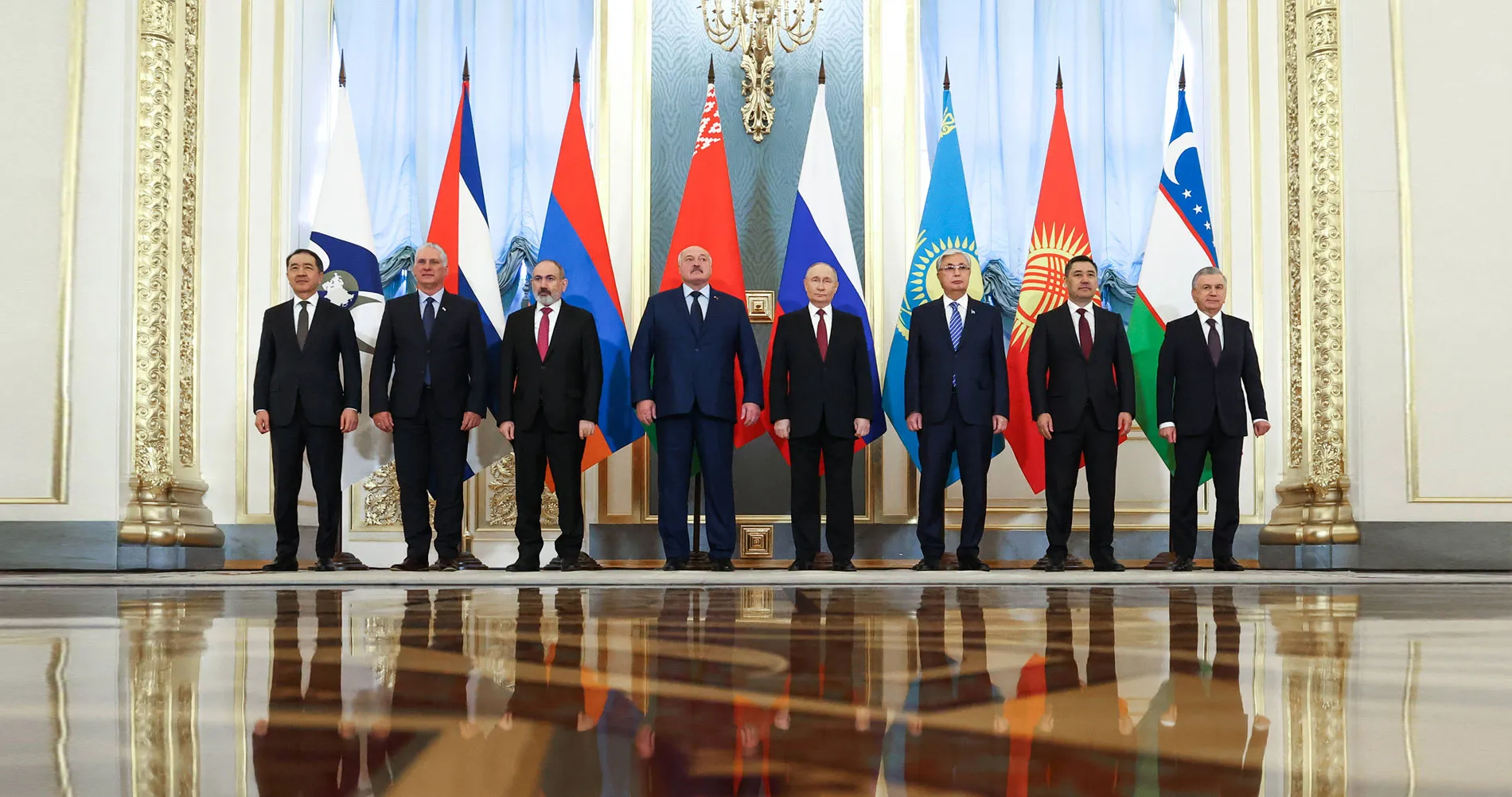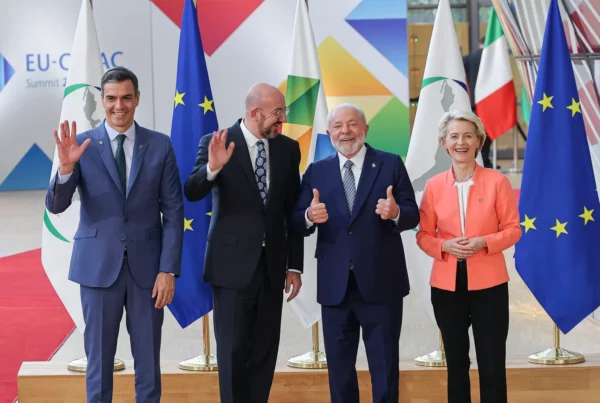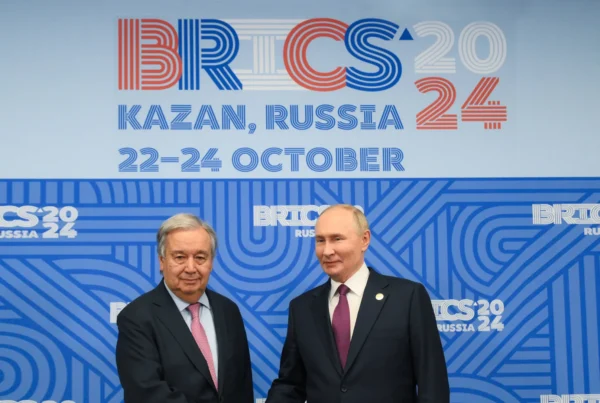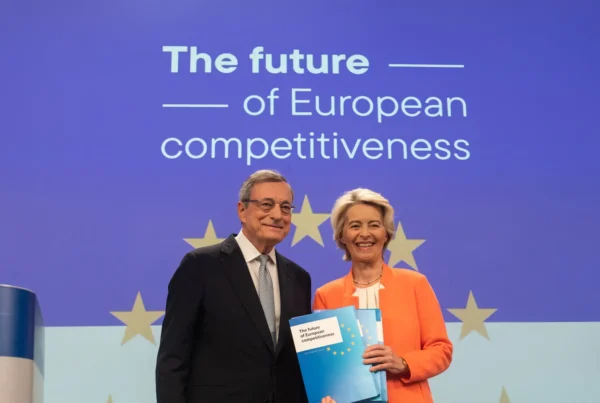The Eurasian Economic Union (EAEU) has played an important role in Eurasian economic relations since its foundation in 2015. Although it is officially focused on economic matters, critics have argued that the EAEU serves as a tool for Russia to increase its political influence in the post-Soviet space, which has worried some of the EAEU members. As the EAEU to some extent facilitates the evasion of Western sanctions by Russia, it has sought to increase its membership, but so far without success.
Douwe van der Meer
12 March 2025
The 10-year anniversary of the establishment of the Eurasian Economic Union (EAEU) occurred in January 2025. The EAEU, while usually keeping a low profile, plays a significant role in Eurasian economic and trade relations. The EAEU shares important characteristics with the EU: the EAEU Commission and a common market based on the so-called “four freedoms”: the free movement of goods, services, capital and labor.
However, in many important ways the EAEU differs significantly from the European Union: it is dominated by Russia, mostly limited to economic issues and overlaps with several other regional post-Soviet Union organizations, such as the Commonwealth of Independent States (CIS) and the Collective Security Treaty Organization (CSTO). The idea for a Eurasian economic union is often attributed to the first President of Kazakhstan, Nursultan Nazarbayev, who stressed the need for Eurasian economic integration in a speech given at the Moscow State University in 1994. The two decades that followed saw several initial attempts to form a regional organization facilitating economic integration.
The formation of the Eurasian Customs Union (ECU) in 2010 expanded with the Common Economic Space in 2012, laid the basis for the Treaty on the Eurasian Economic Union, which was signed on 29 May 2014 by the presidents of Belarus, Kazakhstan and Russia. These countries were joined in 2015 by Armenia and Kyrgyzstan, making it a five-member organization. The countries of the EAEU have a gross domestic product USD 2391.9 trillion and a total population of 185.5 million.
The EAEU is formally focused on economic issues, functioning mostly as a trade union. It has a development bank, a court of arbitration and a rotating general council. However, the lowering of trade barriers since the establishment of the EAEU did not lead to a significant increase of trade within the bloc. Trade with fellow EAEU members grew only from 8.1 percent to 8.9 percent of Russia’s total trade volume between 2015 and 2021. Despite the lack of growth in trade figures, the EAEU remains an important tool for Russia to exert political influence over the other members.
In Kazakhstan in particular critics have argued that the country’s EAEU membership enhances Russia’s political leverage while offering few economic benefits. Kazakhs have long been concerned about territorial claims by Russian politicians aimed at Russian-majority areas in northern Kazakhstan. Astana has tried to balance its international relations through a multi-vector foreign policy, in which it cooperates with many partners without fully aligning with any of them. However, it remains economically highly dependent on Russia and is careful not to antagonize its powerful northern neighbor. Despite societal concerns, the Kazakh government is therefore unlikely to draw too much attention to the EAEU’s shortcomings.
Armenia finds itself in a similar diplomatic balancing act. Armenian perceptions of Russia have deteriorated sharply since peacekeepers from the Russian-led CSTO failed to interfere in the 2020 Nagorno-Karabakh War and in the subsequent hostilities between Armenia and Azerbaijan. Yerevan has therefore sought to diversify its foreign policy and intensify relations with India, France, the EU and the US. This has not gone down well in Moscow. On 9 January 2025, Russian Deputy Prime Minister Alexei Overchuk stated that Russia perceives Armenia’s attempts to start the EU accession process as the start of its withdrawal from the EAEU. Armenian Prime Minister Nikol Pashinyan thus finds himself in a difficult place. Despite his attempts at diplomatic diversification, Armenia remains highly dependent on Russia in terms of energy, and bilateral trade between Armenia and Russia almost tripled between 2021 and 2024. As long as Armenia remains economically dependent on Russia, it is unlikely to give up its membership in the EAEU customs union.
The importance for Russia of trade through the EAEU has sharply increased since its invasion of Ukraine in February 2022. Kazakhstan, Kyrgyzstan and Armenia have all formally adhered to Western sanctions. However, concerns over sanctions evasions through these EAEU countries persist, particularly regarding dual-use items. While the EAEU’s low trade barriers failed to increase trade before the war in Ukraine they have facilitated Russia’s alternative trade routes after the start of the conflict, at least on paper. (Cell phone and electronics exports from Kazakhstan to Russia increased from c. USD 36.800 in 2021 to over USD 575 million dollars from January-October in 2022. The export value of cars from Armenia to Russia grew from USD 800.000 to USD 180 million between January 2022 and January 2023).
Russia has sought to expand EAEU membership to increase its influence in the post-Soviet sphere. Uzbekistan currently has observer status in the EAEU, thus far refusing Russian pressure to become a full member. Tajikistan has further declined to become an EAEU member, despite lobbying efforts by Russian foreign minister Sergei Lavrov. In addition to offering membership, the EAEU has established bilateral free-trade agreements with Vietnam, Singapore, Serbia and Iran. Further negotiations on free-trade deals are underway with the United Arab Emirates, Egypt, Indonesia and India. As Russia, being a member of a customs zone, cannot unilaterally sign free trade agreements, it uses the EAEU to improve its relations with a range of non-Western countries and allow its economy to function despite Western sanctions. In this way the EAEU remains highly relevant as a trade organization, despite internal shortcomings.







